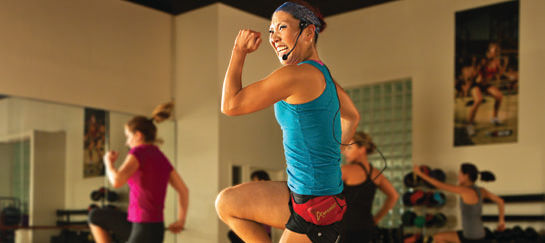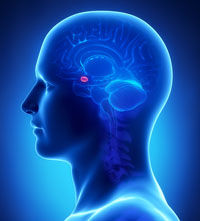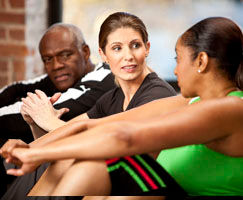
By Jonathan Ross
“I just don’t like exercise.”
“I wish I could eat healthier, but I just love food too much.”
We’ve all heard statements like these more often than we care to count. They might be very true for the person who utters them, but they are objectively false statements. There is no real truth to them.
After all, just as no fish is born with an innate dislike of water, it is not in the human DNA to hate healthy food or physical activity. No one ever naturally hates that which supports life. We learn everything. And from the alphabet to Zumba, everything is hard at first, and then gets easier with practice. Every experience we have also has an emotional context, attaching associations that color them as positive or negative.
Gene variations have an impact on the degree to which each of us enjoys the feeling of exercise, how easy it is to stick with it once we begin, and even whether we notice a dramatic improvement in mood. But fully hating these things is the result of learning, not our genes.
Obesity has made itself quite comfortable in modern society. Until we successfully change the perceptions and beliefs that people have about exercise and healthy eating, obesity is here to stay.
Brain Basics

Deep within the brain is the amygdala, which is the source of powerful emotions, both positive and negative. The amygdala connects to many parts of the brain and thus receives a lot of input, some of it from the prefrontal cortex (the executive function and decision-making part of the brain), and some of it bypassing the prefrontal cortex. This explains how even a subconscious perception or memory can trigger a stress response. Suppose, for example, you were bit by a snake when you were a child. Now, as an adult, you might be out on a walk and step on the end of a stick. Even though you know it’s just a stick, you might still freak out, simply because of your childhood experience.
During an emotionally charged event, the amygdala releases dopamine, a hormone that greatly aids memory and information processing, into the system. Dopamine makes us pay attention to something, and is one of the reasons the brain so strongly remembers emotional components of an experience. Whether those emotions are positive or negative frequently determines how we think and feel about any similar experience.
Furthermore, humans are unique in that we can anticipate, remember and conceptualize danger. The mind is so powerful that we can set off the stress response simply by imagining ourselves in a threatening situation.
Out There in the Real World
Suppose a person was picked on as a kid because he or she was chubby, bad at sports and often picked last, or maybe a young girl was told that “fat girls shouldn’t wear red because you don’t want to stand out and call attention to yourself.” (This is what a formerly obese client of mine was told as a little girl.) These are some of the most powerfully negative experiences a person can have. And these experiences create negative feelings toward physical activity and the body that often present major obstacles to success with fitness in adulthood.
Anyone with these experiences will very likely have an overwhelmingly negative attitude toward exercise in particular and physical activity in general. Unless we change these feelings associated with exercise, success with fitness will prove to be elusive, as no one will willingly devote time, energy and effort to things they hate. They might be able to do it for a little while through willpower, but those efforts won’t last.
Lead the Change
How can you help your clients change their emotional response to exercise? First, help them set better goals. Better goals are more powerful, meaningful goals that are connected to something of emotional importance to someone. Second, use the right type of exercise and specific strategies to create new associations and feelings surrounding physical activity.
Set Better Goals
“What are your fitness goals?” is often answered with one of the following responses: “Lose weight.” “Get in shape.” “Have more energy.” “Get toned.” There are two major problems with goals like this:
1. They are too vague and ambiguous.
2. They have no powerful emotional connection.
Ambiguity is the enemy. Any successful change requires a translation of ambiguous goals into concrete behaviors. For example, if you say, “I want to go on vacation,” and that’s it, you’ll never get anywhere. You have to plan a trip somewhere that interests and inspires you and then start making the specific and detailed plans and actions to get there.
The same is true for your clients’ goals. You can help them set better goals by digging deeply enough into what these goals mean to them and discovering sufficient detail to translate these goals into specific behaviors and actions.

Working with your client to create a series of smaller goals and actions out of bigger goals prevents the bigger goal from becoming too overwhelming. This allows the client to feel successful without having to wait for the big goal to be accomplished, which can often be a long, tough process. Milestones are often too big or time-consuming, so go after some “inch pebbles” instead.
When questioning a client about his or her goals, you need to be “usefully annoying” as I call it. Keep asking “why” something matters and for additional levels of detail that help make the goals specific and meaningful enough that you can create a realistic plan that will also steer your client through low motivation periods.
For example, a client with an initial goal of weight loss is four weeks into her program. She is now dealing with major pressures at work and home and, as a result, is beginning to have trouble following through on her exercise plan. She arrives for a session 10 minutes late and says to you, “I’m so sorry, I’m just overwhelmed at work and at home. I haven’t worked out the last few days and I’m upset because I haven’t lost much weight yet.” What do you say in response? Your response may determine whether the client comes through this well and resumes progressing or continues to struggle.
From your initial, deeper questioning, you know that, beyond weight loss, the client also is motivated by a desire to be fit enough to play with her kids, enjoy recreational activities with her family, and even join a 5k fun run with friends in the near future. You also discovered that the client has a history of stopping and starting exercise programs because situations just like the current one arise and circumstances force her to miss a few workouts. She gets very upset and discouraged with herself, which only adds to the stress of dealing with the work and home pressures. And when the additional disappointment of not seeing much progress with weight loss is added, it all feels like too much. This client is on the brink of losing her commitment, so your response is critical. In this situation, knowing both her tendency for an all-or-nothing response and her desire to achieve more meaningful goals, you can help steer her toward a better outlook by asking, for example, about any differences in her fitness level she has noted when playing with her kids.
If you didn’t ask about this additional, deeper information, you would have a hard time successfully combating the client’s frustrations with not losing weight.
There is a difference between knowing how to act, and being motivated to act. As professionals, the how is easy for us (it’s the program-design part), so we should avoid the usual rush to explain what to do and instead focus on the why. The why is the fuel that will keep a client going, no matter what obstacles might crop up.
Use the Right Type of Exercise
It Has to Get Your Attention
The brain is designed to solve problems related to surviving in an unstable environment, and to do so in nearly constant motion. Our senses evolved to work together, which means that we learn best if we stimulate several senses at once. Thus, it is essential to mix in some form of activity that demands coordination beyond putting one foot in front of the other.
A protein called brain-derived neurotrophic factor (BDNF) protects the brain from damage from things like stress and toxins. More BDNF is produced during exercise, but even greater amounts are produced when an individual does the right type of exercise.
An experiment in which running rats were compared to others that were taught complex motor skills, such as walking across balance beams and navigating unstable objects and elastic rope ladders, found that after two weeks of training the acrobatic rats had a 35 percent greater increase in BDNF as compared to the running rats (Klintsova et al., 2004).
A successful workout program must combine skill acquisition with exercise. Challenging both the brain and the body has a greater positive impact than aerobic exercise alone by tapping into the focusing power of the fight-or-flight response. When the mind is on high alert, there is plenty of motivation to learn the skills necessary for these activities. As far as the brain is concerned, it’s do or die.
Relearn How to Feel About Exercise
If a client has learned to “hate” exercise, your first task is to create different associations with physical activity. We can’t erase the original fear memory; we can, however, try to drown it out by creating a new memory and reinforcing it. By building up parallel circuitry to the fear memory, the brain creates a neutral alternative to the expected anxiety, thereby learning that everything is okay.
With clients who are obese, this means throwing out your program-design rulebook and, for at least the first few weeks, using a “feel better first” approach and taking what you can get. It’s okay if a client can only give you five minutes of aerobic activity at first. Focus efforts more on strength exercises rather than making the common mistake of initiating large amounts of aerobic exercise. Obese individuals typically lack endurance, but possess considerable strength from carrying their own weight around daily. Use their strengths to change what they expect exercise to be like. They expect it to hurt and to make them sore, sweaty and uncomfortable. Surprise them by having it be challenging, but not to the point that it meets their negative expectations.
Choosing to Use It So You Don’t Lose It
Finally, and perhaps most importantly, forced exercise does little to enhance brain function. Exercise stimulates BDNF, which stimulates neurogenesis (creation of new brain cells) and improved learning and memory, but not if the exercise program is viewed as unpleasant. An imposed exercise program is an extreme effort, is perceived as forced and aversive, and is only rarely successful. Exercising grudgingly because you know you should eliminates many of the brain benefits of exercise.
Six Practical Strategies for Increasing Engagement to Enhance the Exercise Experience
Incorporate the following strategies and sample exercises into your clients’ programs to help improve their feelings about exercise and, ultimately, their long-term adherence to a healthy and active lifestyle.
1. Cognitive Processing During Exercise – Try calling out “right,” or “left” or setting up simple decisions by calling out numbers where odd moves left and even moves right, or animals move left and vegetables move right, etc., to stimulate cognitive processing during specific exercises.
Standing Plank With Left-Right Arm Extensions
2. Physical Multitasking – Ask your client to perform one movement while having to do something else, like catch and toss a ball. (Humans can physically multitask much better than we can perform multiple activities requiring mental attention and focus.)
Hamstring Curl With Medicine Ball Toss and Catch
Squat While Tossing an Object to Yourself
3. Stick/Ball Toss/Rock Soccer – Don’t just go for a walk with your client—bring along a tennis ball and toss it back forth, play catch with a small stick, or kick a pebble down the street.
4. Step on a Crack…or Don’t – You remember the old game as a kid where you try to avoid stepping on cracks in the sidewalk. Encourage your client to play it again, either avoiding or aiming to step on every crack. It doesn’t matter which objective is chosen, as both create the need to process information from the outside world and produce a physical response. This is the essence of engagement with physical activity.
5. Dumbbell/Kettlebell “Catches” – Perform a row or swing and quickly release and catch the dumbbell or kettlebell.
Dumbbell Row With Release and Catch
6. Partner/Interactive Exercises – Exercising with somebody immediately boosts feel-good brain chemicals, so try to incorporate partner/interactive exercises with your clients wherever possible.
Surfboard Squat With Partner
“Combat” Squat
Side Plank Stability Ball Game
Conclusion
The obese population isn’t buying the “killer workouts,” pole-dancing classes or high-intensity workouts that we’ve been selling for too long. Only by using the mind and emotions to transform the exercise experience will we alter beliefs, thoughts and feelings about exercise in people who have held on to negative perceptions and experiences for much of their lives. Only a radical change in thinking will lead to the sense of hope that real change is possible, and only this will fuel ongoing participation in exercise.
There are millions of people out there waiting for someone to sell them something besides tire flips. They are hungry for something that meets them where they are today. Use the strategies here to set yourself apart and serve this market well for the next few decades and you will be part of the army that joins forces with ACE to eliminate the obesity epidemic by 2035.
References
Klintsova, A.Y. et al. (2004). Altered expression of BDNF and its high affinity receptor TrkB in response to complex motor learning and moderate exercise. Brain Research, 1028, 92–104.
Luo, C.X. et al. (2007). Voluntary exercise-induced neurogenesis in the post-ischemic dentate gyrus is associated with spatial memory recovery from stroke. Journal of Neuroscience Research, 85, 1637–1646.
Van Praag, H. et al. (2005). Exercise enhances learning and hippocampal neurogenesis in aged mice. Journal of Neuroscience, 25, 8680–8685.
___________________________________________________________________________
 Jonathan Ross, a long-time leader in the fitness industry, is the author of Abs Revealed, a modern, intelligent approach to abdominal training. He was awarded the 2006 ACE Personal Trainer of the Year and 2010 IDEA Personal Trainer of the Year, and is the host of the Discovery Fit & Health series Everyday Fitness. He can be reached at www.AionFitness.com and www.AbsRevealed.com
Jonathan Ross, a long-time leader in the fitness industry, is the author of Abs Revealed, a modern, intelligent approach to abdominal training. He was awarded the 2006 ACE Personal Trainer of the Year and 2010 IDEA Personal Trainer of the Year, and is the host of the Discovery Fit & Health series Everyday Fitness. He can be reached at www.AionFitness.com and www.AbsRevealed.com